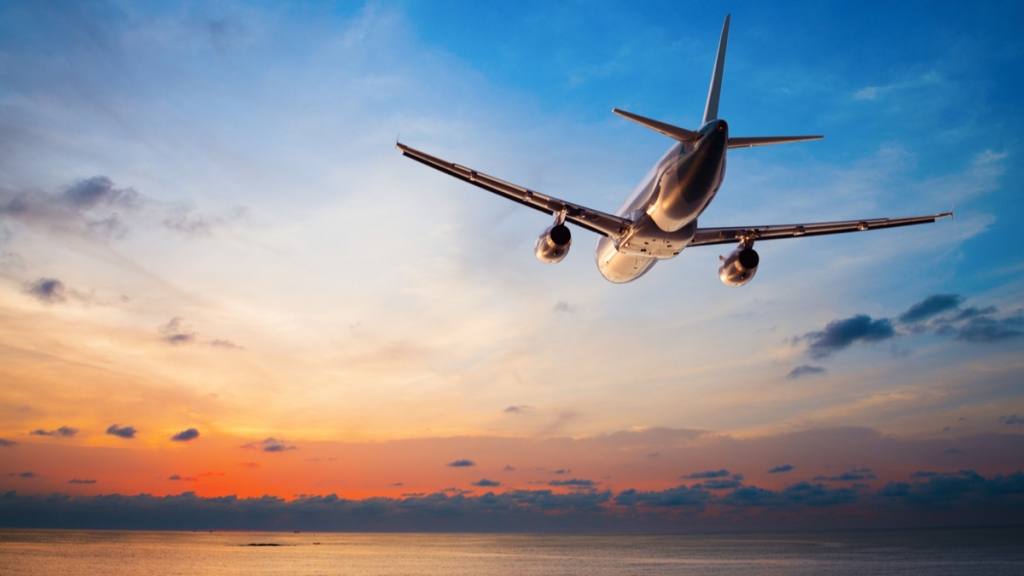Why an environmental management system is becoming a “must have” for all businesses
Canary Wharf Group has joined with 411 major corporations worldwide incommitting to a...

We all know that our flights cost more when we want more comfort than is offered by economy class. There are less seats, they take up more space, so logically they cost more. A lot more.
But have you considered that turning left when you board that flight also means you’re dialling up your emissions contribution pretty significantly?
It’s not just the cost of your flight that changes when you fly business or first class; it’s your share of the climate impact, too.
In terms of emissions, the kilogrammes of CO2e per passenger kilometre are measured differently depending on the class of travel. So, an economy class passenger on a long-haul flight will be responsible for the equivalent 79g of carbon dioxide per kilometre; but a business class passenger will be responsible for almost 230g per kilometre.
For me, that means that in my previous life my regular return trip from London to Toronto accounted for 902kg CO2e in economy class, but on the occasions that I got that welcome tap on the shoulder for a free upgrade, all of a sudden I was responsible for a whopping 2.6 tonnes CO2e.
To put that in perspective, that one return flight in business class pumps more greenhouse gases into the atmosphere than my house does in a year!
Simply put, air travel impacts are calculated on the basis of the area of the plane each passenger takes up. More business-class seats, as opposed to more closely-packed economy class seats means fewer passengers can fly. Therefore, each passenger takes a larger share of the emissions.
| What is CO2e? Carbon Dioxide (CO2) isn’t the only greenhouse gas. The main gases that contribute to the greenhouse effect are carbon dioxide, methane (CH4) and nitrous oxide (N2O), plus four groups of fluorinated gases used in (for example) refrigeration, fire protection, insulation systems and in the microelectronics industry. For easier understanding and reporting, emissions can be represented as Carbon Dioxide Equivalent, or CO2e. This consolidates the effect of all emissions as their equivalent in CO2. |
Many businesses actively prevent their staff from flying business class on purely economic grounds. It’s very expensive, and that’s not great for the bottom-line.
On the other hand, when you’re asking staff to take regular long-haul flights and expect them to be productive when they arrive, it’s fair that you at least offer them a class of travel that enables them to get some rest.
Undoubtedly flying has a huge environmental impact. Anecdotally, the images of the Australian bushfires seem to have focused peoples’ minds on this. Certainly, business and governments need to come up with coherent approaches to radically reducing our impacts. Unfortunately, we’ve collectively left it so long that we’re now looking at much more radical changes than if we’d taken the Paris, Rio, or Kyoto climate conferences as seriously as we should have.
A number of businesses are trying to encourage and incentivise their staff to consider the environmental impact of their business travel. This is reflected in their travel policies. A recent newspaper report illustrated how organisations in all sectors are actively reducing their business air travel. The success of firms as diverse as WSP, Lawson Conner, and Sabine Zetteler showed that taking positive steps to reduce climate impact need not impede customer service or business growth.
By taking positive steps now to reduce their dependence on long-haul travel, these businesses are protecting themselves, their customers, and their investors from the impacts of sudden, enforced changes in the future.
Implementing an environmental management system (EMS) provides organisations with an approach and a framework to manage their environmental impact. A critical element of this is to measure and understand their pollution to air, land, and water, along with their consumption of resources. Establishing these benchmarks enables programmes to be developed and implemented that will reduce these impacts.
Organisations can demonstrate the effectiveness of their EMS by certifying it to the internationally recognised ISO 14001 standard.
Morton McCann offers implementation support for organisations seeking to implement environmental management systems to the ISO 14001standard. Commencing with a gap analysis of current practices against the standard, and including policy and procedure development, compliance support, and training services, our consultants will provide the advice and guidance to help your organisation minimise its environmental impact.
We can address environmental management as a single system, or as part of a broader integrated management system. If you’d like to discuss this in more depth, simply complete the contact form, and we’ll call you back.
NOTE: This blog post was written whilst travelling from Newcastle Upon Tyne to London on a new LNER Azuma train. Wi-Fi connectivity throughout the journey meant that the three-hour, city-centre to city-centre journey was much more productive than air or private car. The relative environmental impacts of the journey along with the costs are shown below:
| Mode of transport | Distance (km) | kg CO2e per passenger km* | Total kg CO2e per passenger | Cost (GBP) |
| Train | 398 | 0.04115 | 16.38 | £29.50 |
| Car (average)** | 452 | 0.17336 | 78.36 | £134.69 |
| Air*** | 398 | 0.25493 | 101.46 | £79.00 |
*Figures derived from UK Government Greenhouse Gas Conversion Factors for 2019-20
**Average car assumes 1.6 passengers with cost at HMRC rate of £0.298 per km
***Assumes economy class seat with no checked baggage
Canary Wharf Group has joined with 411 major corporations worldwide incommitting to a...
UK Businesses must report their climate risks to investors from 2021. Theannouncement by...